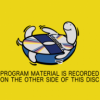| Welcome, Guest |
You have to register before you can post on our site.
|
| Latest Threads |
Typo in one of the forums...
Forum: Bug reports and suggestions
Last Post: velocity
Today, 03:57 AM
» Replies: 0
» Views: 48
|
Babe: Pig in the City (19...
Forum: Released
Last Post: velocity
Today, 03:37 AM
» Replies: 0
» Views: 42
|
TROY (2004) - Replace Sco...
Forum: Requests, proposals, help
Last Post: LEONNIDAS4
Today, 01:07 AM
» Replies: 36
» Views: 17,980
|
Hi all!
Forum: Presentation
Last Post: Shotbot97
Today, 01:01 AM
» Replies: 0
» Views: 38
|
Titanic (1997) Cinema DTS
Forum: Requests, proposals, help
Last Post: emy54
Yesterday, 08:06 PM
» Replies: 1
» Views: 105
|
stwd4nder2 Audio Syncs
Forum: Released
Last Post: emy54
Yesterday, 10:10 AM
» Replies: 89
» Views: 67,966
|
The Band Wagon (1953) - N...
Forum: Released
Last Post: velocity
Yesterday, 04:25 AM
» Replies: 0
» Views: 47
|
Once Upon a Time in the W...
Forum: Released
Last Post: velocity
Yesterday, 01:01 AM
» Replies: 7
» Views: 1,321
|
LaserDiscs needed for rep...
Forum: In progress
Last Post: emy54
2026-01-07, 10:01 PM
» Replies: 579
» Views: 585,910
|
Where to find leaked DCPs
Forum: Everything else...
Last Post: emy54
2026-01-07, 09:48 PM
» Replies: 2
» Views: 144
|
|
|
| The Killer (1989) mono |
|
Posted by: NeonBible - 2020-01-12, 11:01 PM - Forum: Requests, proposals, help
- Replies (17)
|
 |
Does anyone have the Cantonese DD 2.0 mono track from the Japanese Paramount Blu-ray?
The HK Kam & Ronson BD only contains a 7.1 remix.
I have the Criterion DVD which includes a mono track and had a quick go at syncing, but its quite a bit different and will require some patch work.
|

|
|
| [No longer available] Highlander II - US Theatrical Cut - Preservation |
|
Posted by: HippieDalek - 2020-01-08, 03:00 PM - Forum: Released
- Replies (33)
|
 |
UPDATE 12/03/2024 - For now this preservation will no longer be available.
The US Cut of Highlander 2 is suddenly available to buy and stream on Amazon UK! If I had to guess I'd say it's an old, fairly soft, HD transfer made for a DVD that was never released. It's certainly different from every transfer I've seen before. Sadly it's got PAL speedup. I wonder if the UK distributor is planning to finally update their old pan and scan DVD. It's certainly a step up from the French DVD which served as the basis for this preservation.
I encourage everyone who has this preservation to consider buying a copy of the new streaming version, hopefully it will remind the studios that there is demand for a wider release of this cut.
After completing the latest version of the European Theatrical Cut preservation, I thought I'd put one together for the US Theatrical Cut too. I had hoped this would be a quick process (I actually had an initial version ready to release just before New Year) but a few complications came up and it got delayed a few times.
The US Theatrical Cut is a mess, but it deserves to be preserved if only as an example of how not to edit a film. As I was putting this one together I noticed lots of tiny editing oddities which clearly point towards the US Cut being edited from the EU Cut (or at least something very similar to it), rather than this version being put together from scratch. There's one instance where an additional scene is added to the US cut, and when the film proceeds to the next scene you can still see a few frames of fade out from the scene before the new scene. It's a real mess.
The main visual source for this restoration was the French DVD which provides a nicely detailed picture. It's probably the highest detailed SD source I've seen for the film in any cut, however it looks like there's been some DNR applied and there are quite a few compression artefacts. It does however have the US Theatrical colour grading which is nearer to grey than the blue of the EU cut.
Thanks goes to TomArrow for helping me with a shot extension; a ~3 second clip had to be reconstructed from three very different sources. My attempts to fix the shot were far from convincing but TomArrow came up with something that works really well.
I originally used the English language audio from the Japanese DVD of the US Theatrical Cut, which is basically a poor quality LD rip, however Soundman offered me a bit perfect PCM rip from the US laserdisc which was much nicer quality so I've used that here instead.
So thanks to both Tom Arrow Soundman!
![[Image: wWekJ6H.jpg]](https://i.imgur.com/wWekJ6H.jpg)
There's a bit of scope for an second version in the future; I have both the French and Japanese audio for this cut of the film so they could be included if there's call for it. The French audio does feature Christopher Lambert dubbing himself so it may be of interest to some.
I think after this I'll be leaving the world of Highlander 2 for a bit. I've now spent over a year working on various cuts of this film so want to take a break, work on some other projects and learn some new skills. I may revisit this and the EU cut later down the line though as I've still got some ideas for improvements...
PM me for links. I hope you enjoy and please let me know if you have any feedback!
|

|
|
| Hey hey! |
|
Posted by: buseipek - 2020-01-01, 10:37 PM - Forum: Presentation
- Replies (5)
|
 |
Hello there!
It's my first post here and I'm very nervous..
So anyways let me introduce myself!
My name's Buse andd I'm a girl, I'm 18.
I'm from Turkey and I've been reading comics/manga since 2018, I'm also kind of new to anime.
My obsession with Star Wars stated in 2017 which is also the first time I watched the Saga.
I graduated from High School last year and I have a cat!
There's not much that I can think of so yeah
I hope we can get along!! I already loved this place!
|

|
|
| "La Classe américaine" 26th anniversary Special Edition in fool HD* |
|
Posted by: Beber - 2019-12-30, 04:18 PM - Forum: Released
- Replies (15)
|
 |
![[Image: Jml1R.jpg]](https://i.goopics.net/Jml1R.jpg)
George Abitbol, "the Classiest Man on Earth", dies sputtering his famous last words: "Shitty world!" What the heck did he mean? Reporters Steven, Peter and Dave investigate. La Classe américaine is a comedy montage of scenes taken from the Warner Bros. catalog and dubbed to fit the narration.
https://www.imdb.com/title/tt0321715/?ref_=ttpl_pl_tt
For more information on the project, see the original thread here: https://fanrestore.com/thread-2768.html?...%A9ricaine
* So why Special Edition? Why "fool" HD ? Why, why, why indeed? Since I like you guys, I'll tell you all:
- One, 'cause it's a restoration made in the digital era using digital tools unavailable at the time, based on the maximum amount of HD sources available at the moment, to which SD upscales were added to complete the montage.
- Two, 'cause the flashback scene of the writing of the letter is cut shorter on the source DVD, so the edit had to be modified using the onward/backward repetition technique used many times in the movie anyway, to circumvent this issue.
- Three, 'cause the lightening bolt shots in the beginning were never identified as to which movie they came from, so these were replaced by lovely restored ones from a MGM/Warner Home Video movie prior to 1993 to still be in the spirit of the original restrictions. Plus it gives the scene enhanced visual effects à la "Star Wars 'Special Edition'".
- Four, 'cause the whole thing was color timed and degrained to better sell the illusion that the shots are part of the same scenes.
- And finally five.... There is no five.
Video: 1080p @ 25 fps.
Aspect ratio: 2.20:1 just like the 70mm print that never was.
Audio: French PCM stereo and AAC stereo with a fixed line that was clearly out of sync, even more obvious in HD.
Subtitles: French for the hearing impaired, English (pardon my grammar, I asked for an English-speaking proofreader but no one answered), and English informative as to what movie is being used in the montage.
Trailer: specially made for this 26th anniversary Special Edition, also included in the package.
Special thanks to:
CorVans Prod YouTube channel tutorials for DaVinci Resolve 15.
ilovewaterslides for his help on a handful of shots that required visual effects.
Colek, Plissken1138 for helping me locating movie sources.
Direct MEGA link on demand via PM (for active members only), also available on my YouTube channel created just for this project: https://www.youtube.com/channel/UCBgdii0...uRfw6QKE3A
|

|
|
| Neverending Story: Dutch Audio |
|
Posted by: Croweyes1121 - 2019-12-29, 10:03 PM - Forum: Requests, proposals, help
- Replies (19)
|
 |
I don’t know what the differences are, but I’m told that the Blu-ray from Holland has a superior audio track to the US Blu-ray. I’m currently in the process of creating a restored International Cut using the German 4K remastered release and would like to test the Dutch audio track to see if it would be a better option for the project. I do not need the video, audio only.
|

|
|
| hardware for capturing Laserdisc video |
|
Posted by: markosjal - 2019-12-29, 11:48 AM - Forum: Capture and rip
- Replies (10)
|
 |
I am looking at doing Laserdisc captures from Composite video.
I hoped someone may have some advice on what to use. I think DVD recorders and DVD format in feneral produce way too much artifacting. I would also prefer a format better for editing where necessary
Has anyone tested extensively With a DV Firewire capture device?
Thanks
Mark
|

|
|
|